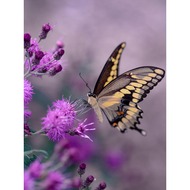Birds of a Feather (3-5)
(View Complete Item Description)This sequence of instruction was developed to help elementary teachers who were working remotely. We developed a short storyline that ties together a few sessions to help explore a specific concept. We tried to include some activities that honored and included the student’s family and experience, and some that included the potential for ELA learning goals.Students make observations of the behaviors while watching short videos of Bald Eagles and Hummingbirds. They then make observations of birds in their own neighborhood or school grounds. They use these observations to explore th knees of these organisms and behaviors used to meet these needs.It is part of Clime Time - a collaboration among all nine Educational Service Districts (ESDs) in Washington and many Community Partners to provide programs for science teacher training around Next Generation Science Standards (NGSS) and climate science, thanks to grant money made available to the Office of the Superintendent of Public Instruction (OSPI) by Governor Inslee.
Material Type: Unit of Study




















